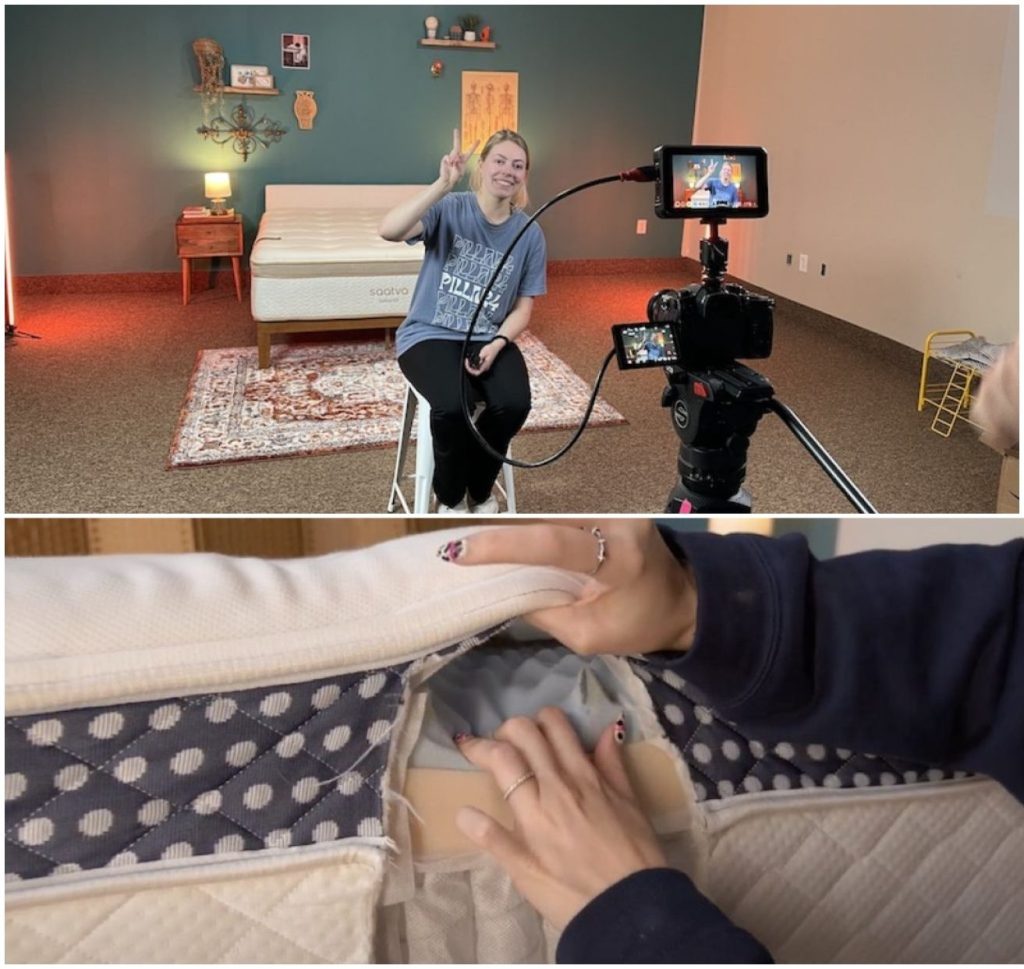Back pain can wreak havoc on your waking and sleeping hours. Finding a bed that helps to alleviate or prevent it can therefore represent a big upgrade to your quality of life.
The best mattresses for back pain all aim for one key result: alignment. An improperly aligned spine1 can cause soreness and exacerbate pre-existing back issues, whether they’re acute or chronic. You’ll want to search for a mattress that encourages healthy alignment while also providing the right level of support, firmness, and comfort.
To get started, take a look at the mattresses we picked as the best beds for back pain below.
Our Top Pick for The Best Mattress for Back Pain
The Helix Midnight Luxe earned our top pick since it’s got a luxurious feel that’s sure to keep you supported and cushioned while mitigating pain.
5 Best Mattresses for Back Pain
- Helix Midnight Luxe – Editor’s Pick
- Emma Hybrid Comfort – Best Firm Mattress for Back Pain
- Nectar – Best Memory Foam Mattress for Back Pain
- EcoCloud by WinkBeds – Best Latex Mattress for Back Pain
- Saatva RX – Best Mattress for Lower Back Pain
Our Video Review of the Best Mattresses for Back Pain

Helix Midnight Luxe Mattress
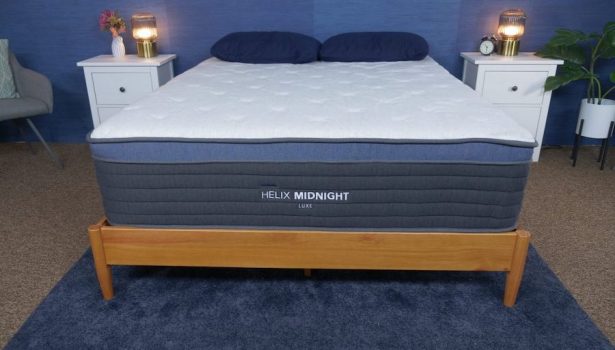
With the Ultra-Cool phase-changing cover and gel-infused foam, the Helix Midnight Luxe is an excellent choice for hot sleepers who also need pressure relief and zoned support.
Material
Hybrid
Trial Period
100 nights
Shipping Method
Free shipping
Firmness
Medium-firm: 6/10
Warranty
15-year warranty
Price Range
$$$$$
We recommend this mattress for the following sleeper types:
Back Sleeping
Ideal for average weight and heavyweight back sleepers.Side Sleeping
Ideal for average weight and heavyweight side sleepers.Stomach Sleeping
Ideal for lightweight stomach sleepers.Financing Options
Financing options are available for this mattress.
Helix Midnight Luxe Mattress

With the Ultra-Cool phase-changing cover and gel-infused foam, the Helix Midnight Luxe is an excellent choice for hot sleepers who also need pressure relief and zoned support.
Material
Hybrid
Warranty
15-year warranty
Firmness
Medium-firm: 6/10
Shipping Method
Free shipping
Trial Period
100 nights
Price Range
$$$$$
We recommend this mattress for the following sleeper types:
Back Sleeping
Ideal for average weight and heavyweight back sleepers.Side Sleeping
Ideal for average weight and heavyweight side sleepers.Stomach Sleeping
Ideal for lightweight stomach sleepers.Financing Options
Financing options are available for this mattress.

Helix Midnight Luxe Mattress
With the Ultra-Cool phase-changing cover and gel-infused foam, the Helix Midnight Luxe is an excellent choice for hot sleepers who also need pressure relief and zoned support.
Material
Hybrid
Firmness
Medium-firm: 6/10
Trial Period
100 nights
Warranty
15-year warranty
Shipping Method
Free shipping
Price Range
$$$$$
We recommend this mattress for the following sleeper types:
Back Sleeping
Ideal for average weight and heavyweight back sleepers.Side Sleeping
Ideal for average weight and heavyweight side sleepers.Stomach Sleeping
Ideal for lightweight stomach sleepers.Financing Options
Financing options are available for this mattress.
Why the Helix Midnight Luxe Earned Best Mattress for Back Pain Overall
The Helix Midnight Luxe is the luxury rendition of the brand’s Helix mattress, a medium-firm hybrid mattress. This upgraded bed features a plush pillow top plus zoned support coils for a balanced, springy feel.
We gave it our top spot on this list for its pressure relief and spinal alignment abilities. More than that, its middle-of-the-road firmness should work well for sleepers seeking respite from aches and pains, especially in their back.
Emma Hybrid Comfort
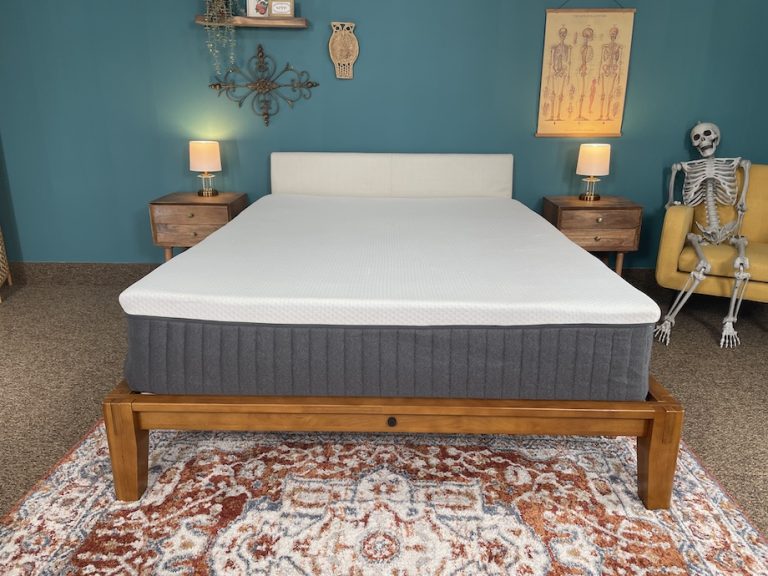
With three foam layers for comfort and a zoned innerspring unit, this hybrid mattress from Emma can support sleepers of all shapes and sizes.
Material
Hybrid
Trial Period
365 nights
Shipping Method
Free shipping
Firmness
Firm: 7/10
Warranty
10-year warranty
Price Range
$$$$$
We recommend this mattress for the following sleeper types:
Hot Sleepers
If you often overheat while you sleep, this mattress should help you stay cool.Back Sleeping
Ideal for average weight and heavyweight back sleepers.Stomach Sleeping
Ideal for lightweight and heavyweight stomach sleepers.Financing Options
Financing options are available for this mattress.
Emma Hybrid Comfort

With three foam layers for comfort and a zoned innerspring unit, this hybrid mattress from Emma can support sleepers of all shapes and sizes.
Material
Hybrid
Warranty
10-year warranty
Firmness
Firm: 7/10
Shipping Method
Free shipping
Trial Period
365 nights
Price Range
$$$$$
We recommend this mattress for the following sleeper types:
Hot Sleepers
If you often overheat while you sleep, this mattress should help you stay cool.Back Sleeping
Ideal for average weight and heavyweight back sleepers.Stomach Sleeping
Ideal for lightweight and heavyweight stomach sleepers.Financing Options
Financing options are available for this mattress.

Emma Hybrid Comfort
With three foam layers for comfort and a zoned innerspring unit, this hybrid mattress from Emma can support sleepers of all shapes and sizes.
Material
Hybrid
Firmness
Firm: 7/10
Trial Period
365 nights
Warranty
10-year warranty
Shipping Method
Free shipping
Price Range
$$$$$
We recommend this mattress for the following sleeper types:
Hot Sleepers
If you often overheat while you sleep, this mattress should help you stay cool.Back Sleeping
Ideal for average weight and heavyweight back sleepers.Stomach Sleeping
Ideal for lightweight and heavyweight stomach sleepers.Financing Options
Financing options are available for this mattress.
Why the Emma Hybrid Comfort Earned Best Firm Mattress for Back Pain
Sometimes, a too-soft mattress can cause back pain when it doesn’t properly support you and keep you in alignment. The Emma Hybrid Comfort is a hybrid bed with a firmer feel that should ensure you remain lifted on its surface.
The key is the bed’s spring unit, which has ultra-strong coils that stay resilient when supporting your weight. Zoned support also cushions or buoys different parts of the body according to your needs.
Nectar Mattress
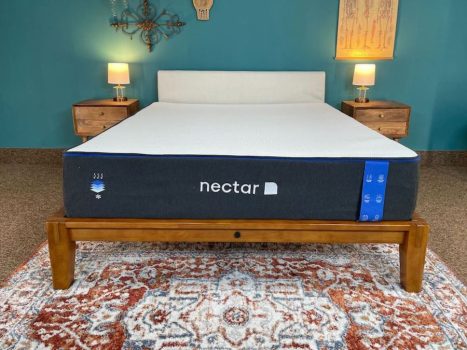
Nectar offers the deeper hug of a traditional memory foam bed but with updated cooling and a Forever warranty.
Material
Foam
Trial Period
365 nights
Shipping Method
Free shipping
Firmness
Medium-firm: 6.5/10
Warranty
Lifetime warranty
Price Range
$$$$$
We recommend this mattress for the following sleeper types:
Joint Pain
This bed is perfect for anyone suffering from joint pain.Hip Pain
This bed is perfect for anyone suffering from hip pain.Back Sleeping
Ideal for lightweight and average weight back sleepers.Side Sleeping
Ideal for lightweight and average weight side sleepers.Financing Options
Financing options are available for this mattress.
Nectar Mattress

Nectar offers the deeper hug of a traditional memory foam bed but with updated cooling and a Forever warranty.
Material
Foam
Warranty
Lifetime warranty
Firmness
Medium-firm: 6.5/10
Shipping Method
Free shipping
Trial Period
365 nights
Price Range
$$$$$
We recommend this mattress for the following sleeper types:
Joint Pain
This bed is perfect for anyone suffering from joint pain.Hip Pain
This bed is perfect for anyone suffering from hip pain.Back Sleeping
Ideal for lightweight and average weight back sleepers.Side Sleeping
Ideal for lightweight and average weight side sleepers.Financing Options
Financing options are available for this mattress.

Nectar Mattress
Nectar offers the deeper hug of a traditional memory foam bed but with updated cooling and a Forever warranty.
Material
Foam
Firmness
Medium-firm: 6.5/10
Trial Period
365 nights
Warranty
Lifetime warranty
Shipping Method
Free shipping
Price Range
$$$$$
We recommend this mattress for the following sleeper types:
Joint Pain
This bed is perfect for anyone suffering from joint pain.Hip Pain
This bed is perfect for anyone suffering from hip pain.Back Sleeping
Ideal for lightweight and average weight back sleepers.Side Sleeping
Ideal for lightweight and average weight side sleepers.Financing Options
Financing options are available for this mattress.
Why the Nectar Earned Best Memory Foam Mattress for Back Pain
When you think of memory foam, you probably picture a soft material that sinks easily beneath your weight. But foam comes in a variety of densities, and the Nectar combines plush and firmer foams to create a bed with the right amount of overall support for back pain.
I’ve tested the Nectar multiple times, and I’m always impressed by how the upper layer cushions my body while the firmer base foam provides a reassuring amount of resistance. Back and side sleepers in particular should benefit from this synergy—it helps to keep the spine aligned while maintaining that iconic cradling feel.
WinkBeds EcoCloud Mattress
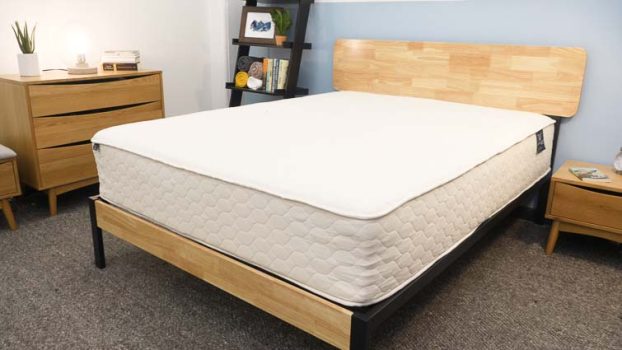
The EcoCloud by Winkbed provides a premium experience With some of the most natural materials in the bedding industry!
Material
Latex
Trial Period
120 nights
Shipping Method
Free shipping
Firmness
Medium: 5.5/10
Warranty
Lifetime warranty
Price Range
$$$$$
WinkBeds EcoCloud Mattress

The EcoCloud by Winkbed provides a premium experience With some of the most natural materials in the bedding industry!
Material
Latex
Warranty
Lifetime warranty
Firmness
Medium: 5.5/10
Shipping Method
Free shipping
Trial Period
120 nights
Price Range
$$$$$

WinkBeds EcoCloud Mattress
The EcoCloud by Winkbed provides a premium experience With some of the most natural materials in the bedding industry!
Material
Latex
Firmness
Medium: 5.5/10
Trial Period
120 nights
Warranty
Lifetime warranty
Shipping Method
Free shipping
Price Range
$$$$$
Why the WinkBeds EcoCloud Earned Best Latex Mattress for Back Pain
The latex inside the EcoCloud works alongside its springs to foster ideal spinal alignment. Crucially, both components of the mattress are zoned into regions with slightly different feels, so you should experience more support beneath your lower back and more plushness under your hips and shoulders.
“This helps to keep the body straight, helping to reduce aches and pains when [you] wake up,” said Stuart, one of our mattress testers. And indeed, multiple customer reviews on the WinkBeds site praise the EcoCloud for its mitigating effect on their back pain.
As for Stuart, he found the EcoCloud to be a supremely comfortable bed: “The top materials help easy my body weight into the coils, and all the layers work together all the way through to help relieve pressure.”
Saatva Rx Mattress
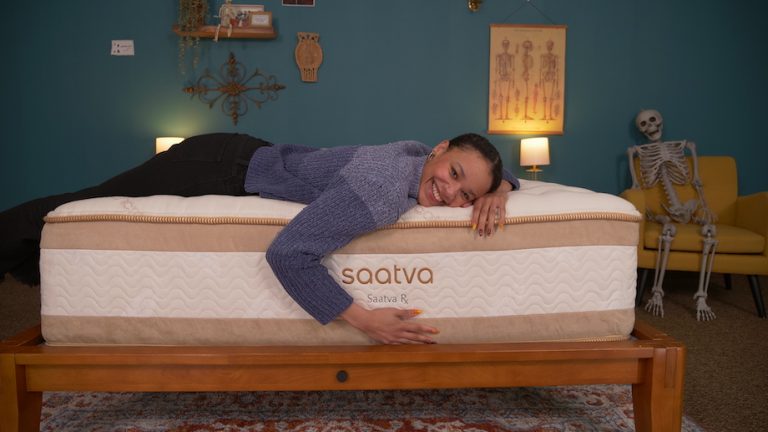
The Saatva Rx mattress offers exceptional support for those with back and joint pain.
Material
Hybrid
Trial Period
365 nights
Shipping Method
Free white glove delivery
Firmness
Medium-firm: 6/10
Warranty
Lifetime warranty
Price Range
$$$$$
We recommend this mattress for the following sleeper types:
Hip Pain
This bed is perfect for anyone suffering from hip pain.Back Pain
This bed is perfect for anyone suffering from back pain.Back Sleeping
Ideal for lightweight and average weight back sleepers.Side Sleeping
Ideal for lightweight and average weight side sleepers.Stomach Sleeping
Ideal for lightweight and average weight stomach sleepers.Financing Options
Financing options are available for this mattress.
Saatva Rx Mattress

The Saatva Rx mattress offers exceptional support for those with back and joint pain.
Material
Hybrid
Warranty
Lifetime warranty
Firmness
Medium-firm: 6/10
Shipping Method
Free white glove delivery
Trial Period
365 nights
Price Range
$$$$$
We recommend this mattress for the following sleeper types:
Hip Pain
This bed is perfect for anyone suffering from hip pain.Back Pain
This bed is perfect for anyone suffering from back pain.Back Sleeping
Ideal for lightweight and average weight back sleepers.Side Sleeping
Ideal for lightweight and average weight side sleepers.Stomach Sleeping
Ideal for lightweight and average weight stomach sleepers.Financing Options
Financing options are available for this mattress.

Saatva Rx Mattress
The Saatva Rx mattress offers exceptional support for those with back and joint pain.
Material
Hybrid
Firmness
Medium-firm: 6/10
Trial Period
365 nights
Warranty
Lifetime warranty
Shipping Method
Free white glove delivery
Price Range
$$$$$
We recommend this mattress for the following sleeper types:
Hip Pain
This bed is perfect for anyone suffering from hip pain.Back Pain
This bed is perfect for anyone suffering from back pain.Back Sleeping
Ideal for lightweight and average weight back sleepers.Side Sleeping
Ideal for lightweight and average weight side sleepers.Stomach Sleeping
Ideal for lightweight and average weight stomach sleepers.Financing Options
Financing options are available for this mattress.
Why the Saatva RX Earned Best Mattress for Lower Back Pain
As the name implies, the Saatva RX is a luxury mattress specifically designed for sleepers with medical conditions that exacerbate back pain. This bed keeps you supported while adjusting to your movements, working to ensure that pressure won’t build up in sensitive areas.
The Saatva RX is reinforced in the center of the mattress to specifically help tackle pesky pain in the lower back. Features like a lumbar crown, specialized quilting, and zoned coils will ensure this area of your body remains comfortably lifted.
How Can a Mattress Help with Back Pain?
A mattress can help ease back pain by providing the kind of support that will keep your spine aligned and the type of contouring that provides pressure relief. Additionally, a bed with good motion isolation can help prevent a partner’s movement from aggravating your back pain, and one with good edge support can make it easier for you to get in and out of bed.
There are a variety of different personal factors to consider such as your preferred sleeping position, body weight, and where your pain is located. From there, you can begin to determine what type of mattress will work best for you.
“Your mattress can either make your back pain worse or help ease it. If it’s too soft, your spine might sink too much, putting extra strain on your lower back. But if it’s firm enough to keep your spine aligned, it can actually reduce pressure and discomfort, giving you some relief.”
Dr. Raj Dasgupta,
What to Look for in a Mattress for Back Pain
There’s no single type of mattress that will always be best for alleviating or preventing back pain in everyone.
The best mattress for your back pain could incorporate foam, springs, or both — as long as it suits your sleeping position, body weight, and medical needs.
Mattress Features
Pressure Relief
It’s essential that you aren’t sleeping on a bed that places too much pressure on your spine. This is also true for any major joints. That’s what’s going to allow your body to rest in a relaxed state. The chance of pressure points forming along the spine is diminished dramatically when the appropriate product is picked.
For pressure relief, look at beds containing memory foam and latex, and avoid traditional innerspring models with a thin comfort layer.
Support
Aches and pains radiating from your lower back is common for many sleepers (upper back pain is less common). However, going to sleep shouldn’t be associated with added pressure on your body.
Keep in mind that firmness and support are not the same characteristics. You can easily have a soft or plush mattress that still offers fantastic support. At the same time, if your bed is firm, it doesn’t mean that it would give poor support or lack comfort. An adequate level of support should genuinely result from a mattress that manages to align your spine properly.
Zoned support can also be helpful for those with back pain. Many beds, especially hybrid models, have zoned support with added pressure relief and support in certain areas. This typically includes the center of the bed where most people need the most support. Beds with zoned support can provide advanced lifting to keep the body well-aligned, preventing the hips and lower back from sinking too deeply into the construction.
Firmness
Firmness reflects how soft or hard the mattress feels when you lie on it. The question many people ask is: Are firm mattresses truly better for back health issues?
When it comes to back pain, the ideal firmness for most people is medium-firm. This means that you should aim for a new mattress that falls into that category on the mattress firmness scale, which is between a 5 and 7 rating. A medium-firm feel should remove the pressure from your lower back and allow for a good night’s sleep.
With that said, some people tend to feel that a softer or firmer mattress is better for their back. Of course, this is somewhat individual and it is based on your sleeping style.
Another consideration to account for when determining the ideal firmness for your back pain would be your weight. For instance, the heavier you are, the more pressure your body would exert on the mattress and the more it would impact it. Therefore, you might be looking at something firmer to compensate for this sinking.
On the other hand, lighter-weight people tend to stay away from harder beds as these could potentially exacerbate their back issues. Also, keep in mind that most mattresses have a “break-in” period in which the firmness level may change.
Type of Mattress
Innerspring Mattresses
Innerspring mattresses can be beneficial for back pain. Orthopedic models, in particular, offer full-body support, often with targeted support zones, and tend to feature pocket coil systems.
These mattresses contain hundreds or thousands of coils, with newer models individually wrapping their coils for more tailored support and less motion transfer. More springs typically equate to more support, so aim for 1,000-2,000 springs if possible. If you weigh more than 400 pounds or so, consider a mattress with more than 2,000 springs or look into the gauge (thickness) of the wire.
Discover: Best Innerspring Mattress
Hybrid Mattresses
Hybrid mattresses can be good for back pain as they combine pressure-relieving foam and supportive springs.
By arranging their foam layers on top of a coil unit, hybrid mattresses blend the benefits of both foam and innerspring models. They’re also highly customizable, so you should look for a hybrid that checks all of your boxes in terms of feel while providing the right foundation for your spine.
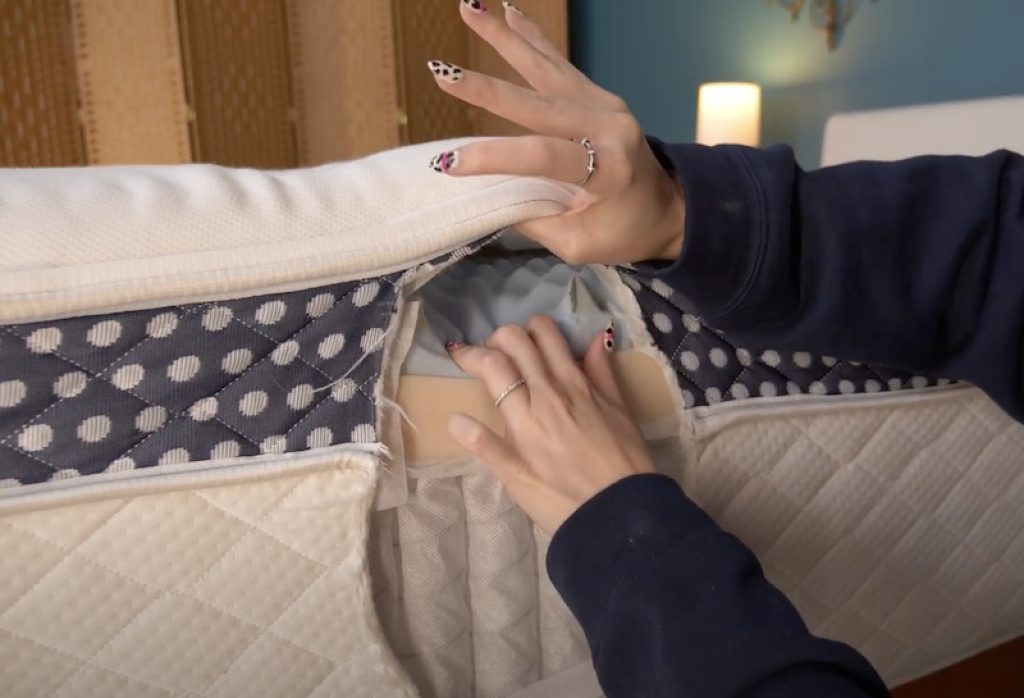
Hybrids can be pricy when compared to other mattress types, but you’re paying for an extremely comprehensive set of features.
Memory Foam Mattresses
Memory foam is often a great material for sleepers with back pain. You’ll want to find a memory foam mattress with the right amount of firmness and support, though, since softer foams won’t always promote healthy spinal alignment.
Side sleeping3, especially with a pillow placed between your knees, can help alleviate back pain, and memory foam is a fantastic material for this sleep posture. A memory foam mattress should likewise excel at combating pressure buildup in the hips and shoulders.
You’ll also need to consider the density of the memory foam, which is measured in pounds per cubic foot (PCF). Foams with a density of 5 PCF should provide you with optimal spinal alignment and support. Medium-density foams of 4 PCF offer a little less contouring, and low-density ones (between 2 and 3 PCF) are likely not supportive enough.
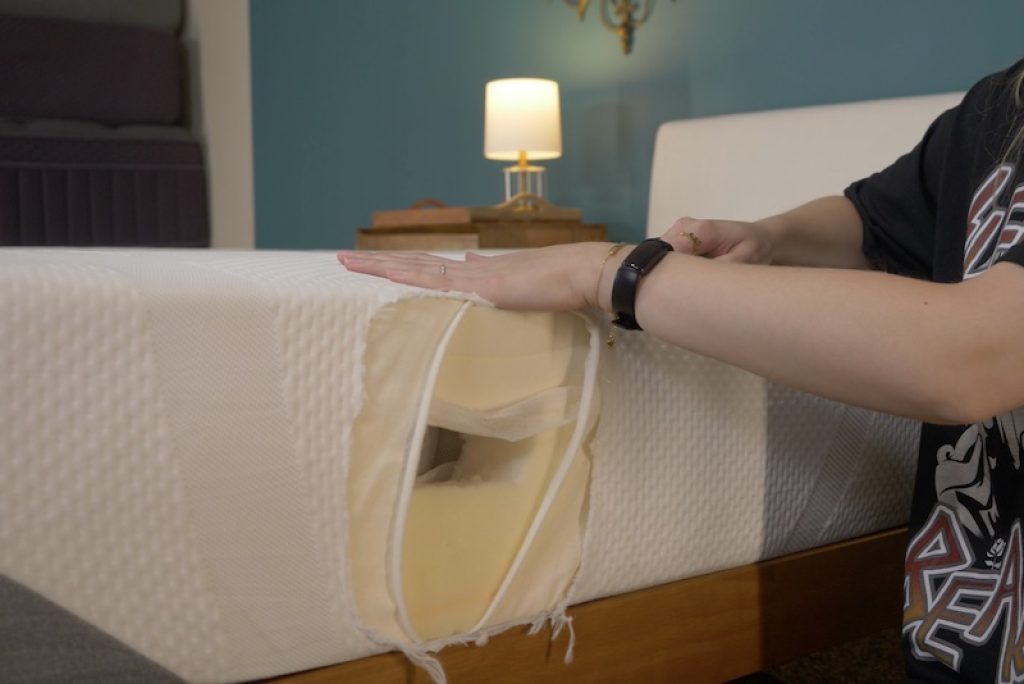
Keep an eye out for memory foam beds with zoned support — they offer more support to key areas like the lower back and are often a better option than mattresses with even support throughout.
Latex Mattresses
Latex is a highly recommended material for chronic back pain issues. It’s more responsive and cooler than memory foam, and it comes from a more natural (rather than wholly synthetic) source.
As a buoyant material that quickly responds to movement, latex should make it easier for anyone with pain to shift positions or get in and out of bed. Research4 has also found that latex mattresses do a better job of evenly distributing body pressure compared to polyfoam beds.
Although it’s a more high-end option with a price tag to match, latex’s excellent durability means it should last you a long time.
What about the disadvantages? Well, although latex beds can relieve pressure well, they usually won’t provide as much contouring as memory foam. If you love the feeling of sinking into your bed, latex may not be your perfect match.
Explore our picks for the best latex mattresses.
Compare Average Performance Ratings of Mattress Types
| Test | Innerspring | Innerspring | Hybrid | Latex |
|---|---|---|---|---|
| Pressure Relief | 4 | 4.3 | 4.4 | 3.3 |
| Support | 5 | 4.3 | 4.6 | 4.8 |
Compare The Best Mattresses for Back Pain
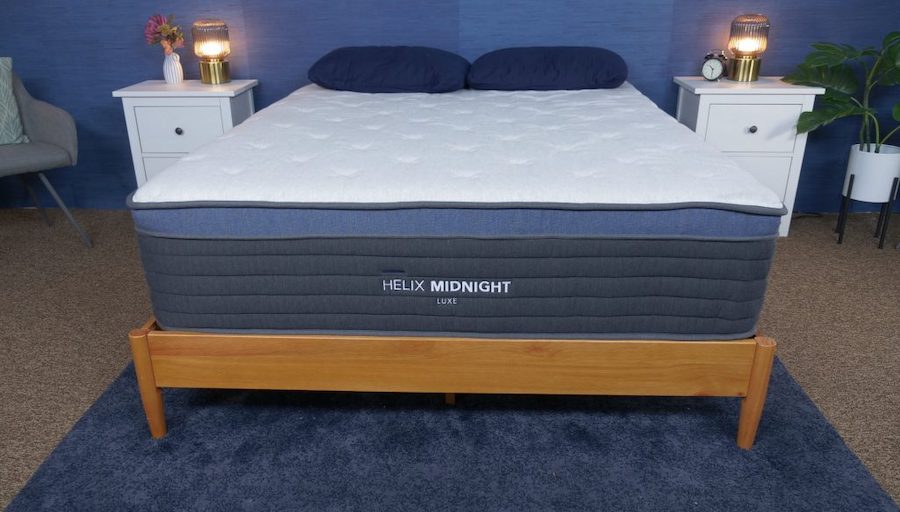
|
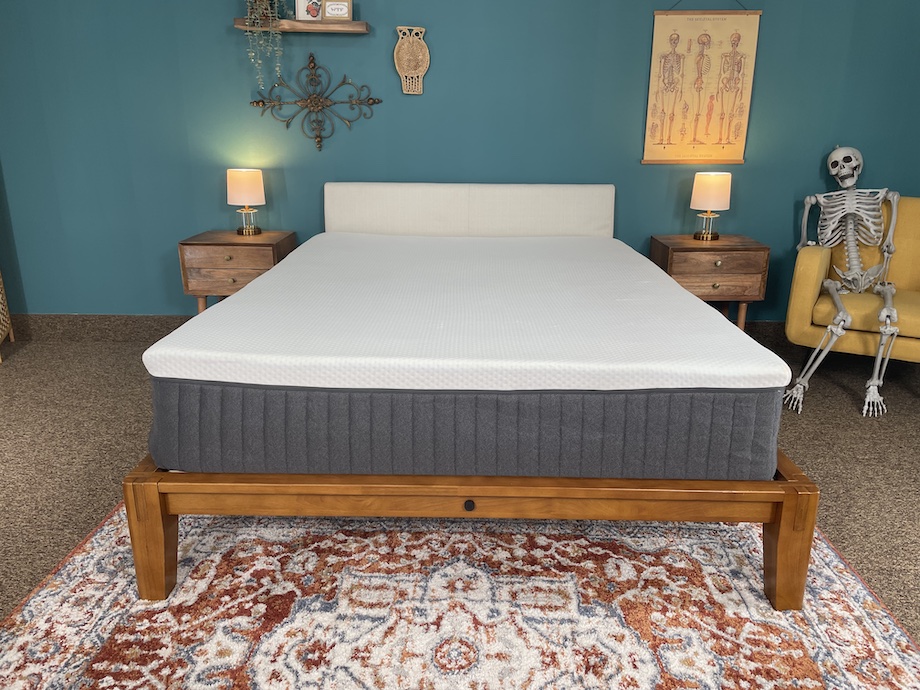
|
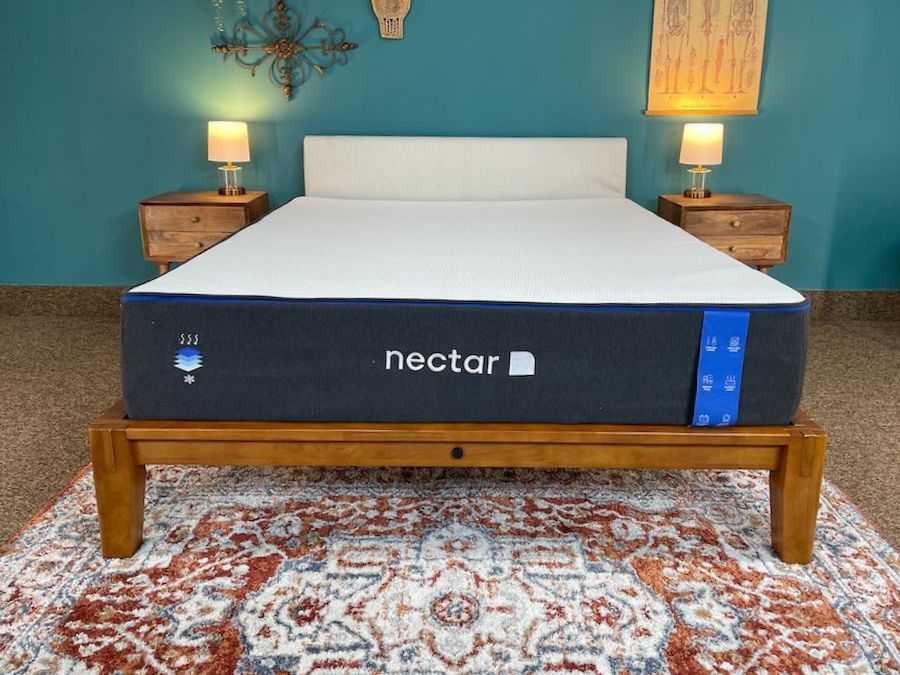
|
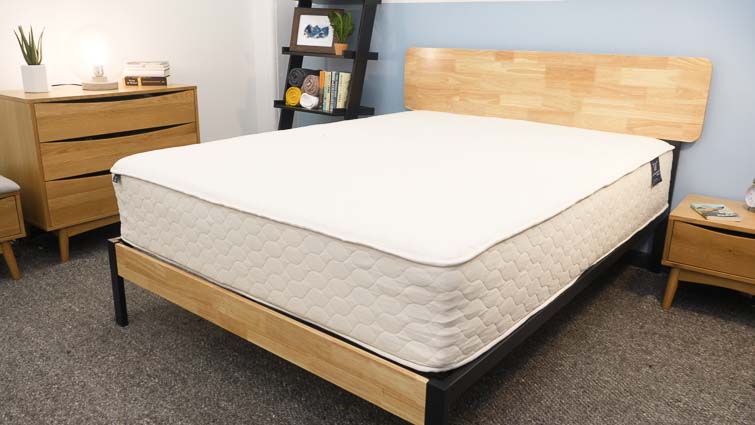
|
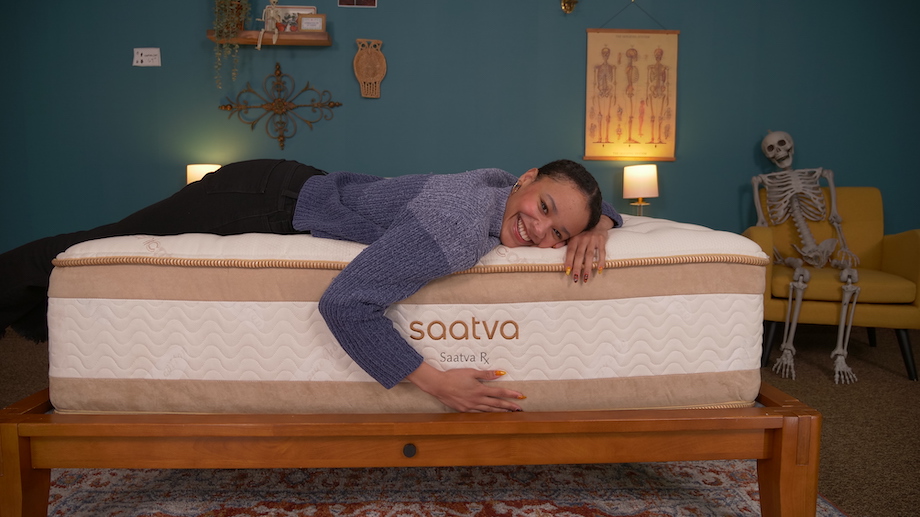
|
|
| Helix Midnight Luxe Mattress | Emma Hybrid Comfort | Nectar Mattress | WinkBeds EcoCloud Mattress | Saatva Rx Mattress | |
| Rating | |||||
| Firmness | Medium-firm: 6/10 | Firm: 7/10 | Medium-firm: 6.5/10 | Medium: 5.5/10 | Medium-firm: 6/10 |
| Material | Hybrid | Hybrid | Foam | Latex | Hybrid |
| Cooling | — |
|
— | — | — |
| Warranty | 15-year warranty | 10-year warranty | Lifetime warranty | Lifetime warranty | Lifetime warranty |
| Shipping | Free shipping | Free shipping | Free shipping | Free shipping | Free white glove delivery |
| Trial Period | 100 nights | 365 nights | 365 nights | 120 nights | 365 nights |
| Best For | Back Sleepers, Stomach Sleepers, Side Sleepers | Back Sleepers, Stomach Sleepers, Hot Sleepers | Back Sleepers, Side Sleepers, Hip Pain, Joint Pain | Back Sleepers, Side Sleepers | Back Pain, Hip Pain, Stomach Sleepers, Side Sleepers, Back Sleepers |
Helix Midnight Luxe – Editor’s Pick
Helix Midnight Luxe Mattress

With the Ultra-Cool phase-changing cover and gel-infused foam, the Helix Midnight Luxe is an excellent choice for hot sleepers who also need pressure relief and zoned support.
Material
Hybrid
Trial Period
100 nights
Shipping Method
Free shipping
Firmness
Medium-firm: 6/10
Warranty
15-year warranty
Price Range
$$$$$
We recommend this mattress for the following sleeper types:
Back Sleeping
Ideal for average weight and heavyweight back sleepers.Side Sleeping
Ideal for average weight and heavyweight side sleepers.Stomach Sleeping
Ideal for lightweight stomach sleepers.Financing Options
Financing options are available for this mattress.
Helix Midnight Luxe Mattress

With the Ultra-Cool phase-changing cover and gel-infused foam, the Helix Midnight Luxe is an excellent choice for hot sleepers who also need pressure relief and zoned support.
Material
Hybrid
Warranty
15-year warranty
Firmness
Medium-firm: 6/10
Shipping Method
Free shipping
Trial Period
100 nights
Price Range
$$$$$
We recommend this mattress for the following sleeper types:
Back Sleeping
Ideal for average weight and heavyweight back sleepers.Side Sleeping
Ideal for average weight and heavyweight side sleepers.Stomach Sleeping
Ideal for lightweight stomach sleepers.Financing Options
Financing options are available for this mattress.

Helix Midnight Luxe Mattress
With the Ultra-Cool phase-changing cover and gel-infused foam, the Helix Midnight Luxe is an excellent choice for hot sleepers who also need pressure relief and zoned support.
Material
Hybrid
Firmness
Medium-firm: 6/10
Trial Period
100 nights
Warranty
15-year warranty
Shipping Method
Free shipping
Price Range
$$$$$
We recommend this mattress for the following sleeper types:
Back Sleeping
Ideal for average weight and heavyweight back sleepers.Side Sleeping
Ideal for average weight and heavyweight side sleepers.Stomach Sleeping
Ideal for lightweight stomach sleepers.Financing Options
Financing options are available for this mattress.
What’s The Helix Midnight Luxe Made Of?
The Helix Midnight Luxe is 13.5 inches tall with six total layers. All foams used in its construction are CertiPUR-US® certified.
The bed starts out with a cooling pillow top; this layer is made of quilted foam and swaddled in a breathable Tencel™ Lyocell cover. For an added fee, you can upgrade to the super-cool GlacioTex™ cover.
The first layer underneath the pillow top is a medium-feel responsive foam that bounces back quickly as it comfortably cradles your body. Next, a copper-gel-infused memory foam cushions while keeping naturally cool and preventing bacterial buildup.
The final memory foam layer before the coils helps transition into it and has a denser construction to bolster support of the comfort layers above it.
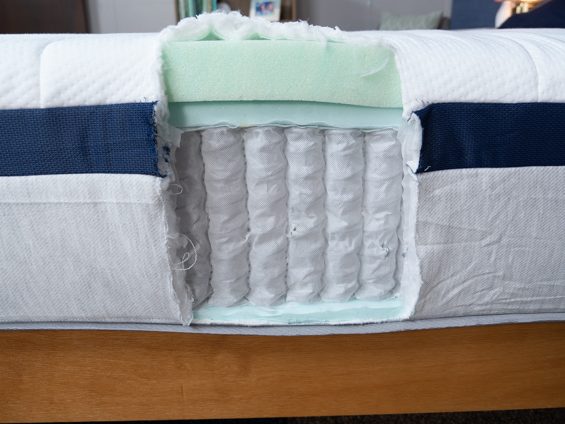
Individually wrapped coils make up the innerspring unit and are zoned across the middle of the mattress for enhanced lumbar support, leading to proper alignment of your spine. The edges of the mattress are also reinforced to keep them from sagging. Finally, everything sits on top of a dense foam base.
Our Take: “It also gets an A for pain relief. The zoned support layer does a good job at pressure and weight distribution, so it’s a good option for folks with aches and pains.” – Loren Bullock, Lead Product Tester
What I Liked
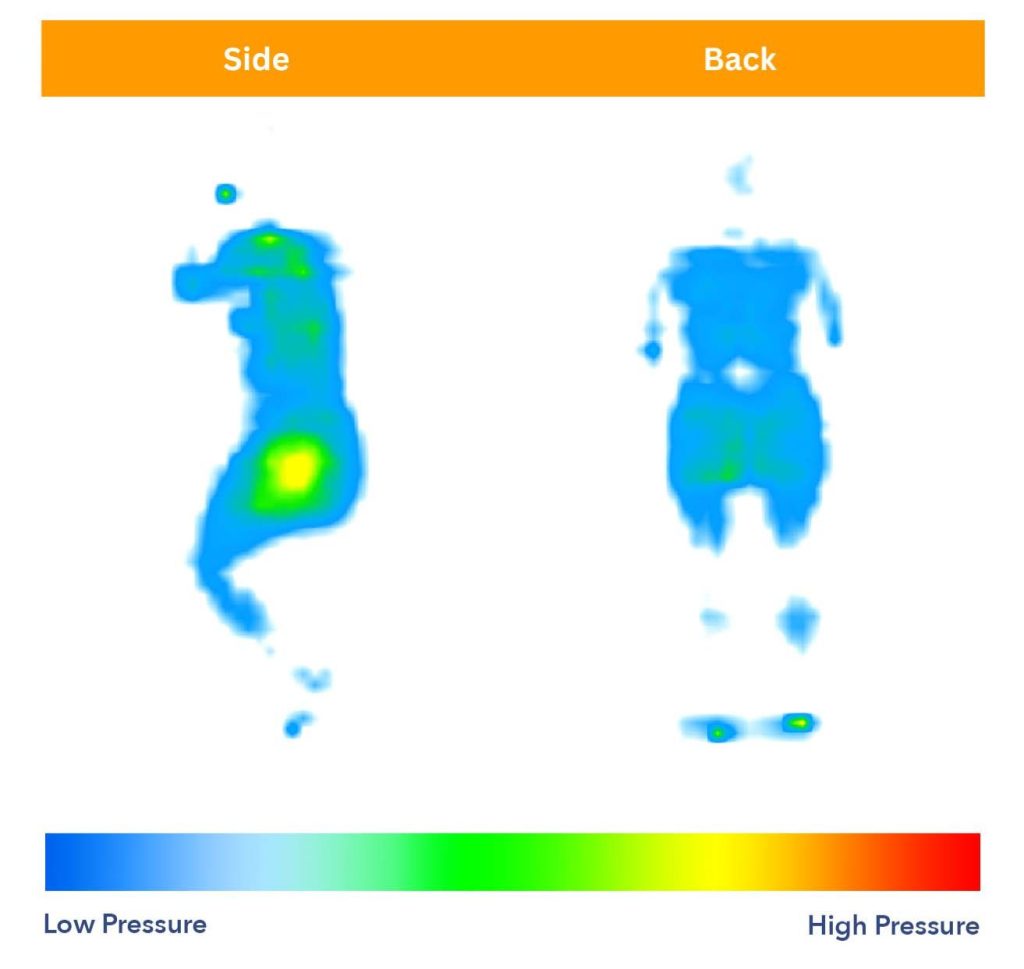
- Supportive and soft – The Helix Midnight Luxe’s hybrid construction lends it an edge when it comes to maintaining a balance of lift and pressure relief. Foams and coils work together to create this comfortable feeling that should suit a variety of sleeping positions and body types.
- Cooling capability – Not only is the Helix Midnight Luxe super comfortable, it keeps cool without breaking a sweat. The cooling pillow top, breathable and gel-infused foam layers, and the individually wrapped coils all work to keep air flowing through the mattress without trapping unwanted heat
Potential Drawbacks
- Luxurious price – The Helix Midnight Luxe is considered a luxury mattress, so the price point is going to be higher than your average bed. A queen will run you about $2,400 before sales or coupons.
- Too soft for some – Some folks may have trouble feeling comfortable on the Helix Midnight Luxe because of the soft foam layers on top. Stomach sleepers, especially those on the heavier side, may find themselves sinking too far into this mattress.
Customer Reviews of the Helix Midnight Luxe Mattress
On Helix’s website, the mattress scores 4.5 out of 5 stars. Customers appreciate the Helix Midnight Luxe mattress for its customized support but have reported that it may not be the best option for those who prefer an exceptionally soft sleep surface.
Interested in more details? Check out our Helix Midnight Luxe mattress review or the best mattresses in 2024.
Emma Hybrid Comfort – Best Firm Mattress for Back Pain
Emma Hybrid Comfort

With three foam layers for comfort and a zoned innerspring unit, this hybrid mattress from Emma can support sleepers of all shapes and sizes.
Material
Hybrid
Trial Period
365 nights
Shipping Method
Free shipping
Firmness
Firm: 7/10
Warranty
10-year warranty
Price Range
$$$$$
We recommend this mattress for the following sleeper types:
Hot Sleepers
If you often overheat while you sleep, this mattress should help you stay cool.Back Sleeping
Ideal for average weight and heavyweight back sleepers.Stomach Sleeping
Ideal for lightweight and heavyweight stomach sleepers.Financing Options
Financing options are available for this mattress.
Emma Hybrid Comfort

With three foam layers for comfort and a zoned innerspring unit, this hybrid mattress from Emma can support sleepers of all shapes and sizes.
Material
Hybrid
Warranty
10-year warranty
Firmness
Firm: 7/10
Shipping Method
Free shipping
Trial Period
365 nights
Price Range
$$$$$
We recommend this mattress for the following sleeper types:
Hot Sleepers
If you often overheat while you sleep, this mattress should help you stay cool.Back Sleeping
Ideal for average weight and heavyweight back sleepers.Stomach Sleeping
Ideal for lightweight and heavyweight stomach sleepers.Financing Options
Financing options are available for this mattress.

Emma Hybrid Comfort
With three foam layers for comfort and a zoned innerspring unit, this hybrid mattress from Emma can support sleepers of all shapes and sizes.
Material
Hybrid
Firmness
Firm: 7/10
Trial Period
365 nights
Warranty
10-year warranty
Shipping Method
Free shipping
Price Range
$$$$$
We recommend this mattress for the following sleeper types:
Hot Sleepers
If you often overheat while you sleep, this mattress should help you stay cool.Back Sleeping
Ideal for average weight and heavyweight back sleepers.Stomach Sleeping
Ideal for lightweight and heavyweight stomach sleepers.Financing Options
Financing options are available for this mattress.
What’s the Emma Hybrid Comfort Made Of?
The Emma Hybrid Comfort has a 13-inch high profile and six layers, including its moisture-wicking cover.
Under that cover is a layer of poly foam with an open-cell design, meaning there are air pockets within the foam that permit cooling airflow.
The subsequent memory foam layer absorbs motion to prevent partners from disturbing one another during the night. It’s followed by a sheet of High Resiliency Extra foam, which promotes neutral spinal alignment via its firm feel.
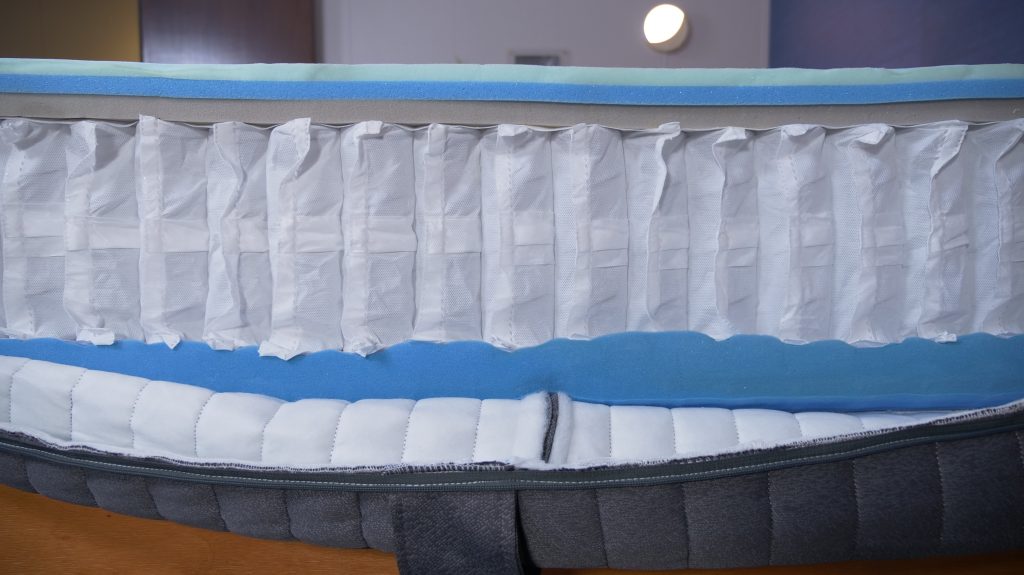
The sturdy coil unit is next. It has pocketed springs that give the bed a pleasant amount of bounce. The coils are also zoned into seven areas that give varying amounts of pushback to different parts of the body, lending the back the support it needs while cushioning other regions.
Finally, the base of the bed is made of a dense, strong foam.
My Take: The Emma Hybrid Comfort’s components are extra-strong and long-lasting, as this mattress was created for couples, larger bodies, and sleepers who crave a palpably supportive feel. Its durable layers create a steadfast bed that can help to mitigate back pain and serve as a cozy shared sleeping surface.
What I Liked
- Zoned springs – Your back often requires a different amount of support than your shoulders, which need more cushioning than resistance. The zoned springs inside the Emma Hybrid Comfort respect this fact, providing tailored support to different areas of the body.
- Cool for couples – Partners should stay pretty cool atop this bed thanks to the makeup of its foams and the airflow from its spring unit.
Potential Drawbacks
- No deep cradling – You won’t feel “hugged” by the Emma Hybrid Comfort. Instead, you should feel reassuringly lifted by both the foams and springs. If you’d prefer to sink in a bit more, then an all-foam bed might be a better fit.
- Very firm feel – Lightweight sleepers and side sleepers may find the Emma Hybrid Comfort too firm. On the other hand, I think that back sleepers and stomach sleepers should enjoy it.
Customer Reviews of the Emma Hybrid
This is a fairly new mattress, so Emma’s site doesn’t have many reviews yet, but early customers already rate it an impressive 5 out of 5 stars. So far customers appreciate the Emma Hybrid Comfort mattress for its excellent motion isolation, but some have reported that it may have a slight initial off-gassing odor upon unboxing.
Want to know more? Read our full Emma Hybrid Comfort mattress review or peruse our top picks for the best firm mattresses.
Nectar – Best Memory Foam Mattress for Back Pain
Nectar Mattress

Nectar offers the deeper hug of a traditional memory foam bed but with updated cooling and a Forever warranty.
Material
Foam
Trial Period
365 nights
Shipping Method
Free shipping
Firmness
Medium-firm: 6.5/10
Warranty
Lifetime warranty
Price Range
$$$$$
We recommend this mattress for the following sleeper types:
Joint Pain
This bed is perfect for anyone suffering from joint pain.Hip Pain
This bed is perfect for anyone suffering from hip pain.Back Sleeping
Ideal for lightweight and average weight back sleepers.Side Sleeping
Ideal for lightweight and average weight side sleepers.Financing Options
Financing options are available for this mattress.
Nectar Mattress

Nectar offers the deeper hug of a traditional memory foam bed but with updated cooling and a Forever warranty.
Material
Foam
Warranty
Lifetime warranty
Firmness
Medium-firm: 6.5/10
Shipping Method
Free shipping
Trial Period
365 nights
Price Range
$$$$$
We recommend this mattress for the following sleeper types:
Joint Pain
This bed is perfect for anyone suffering from joint pain.Hip Pain
This bed is perfect for anyone suffering from hip pain.Back Sleeping
Ideal for lightweight and average weight back sleepers.Side Sleeping
Ideal for lightweight and average weight side sleepers.Financing Options
Financing options are available for this mattress.

Nectar Mattress
Nectar offers the deeper hug of a traditional memory foam bed but with updated cooling and a Forever warranty.
Material
Foam
Firmness
Medium-firm: 6.5/10
Trial Period
365 nights
Warranty
Lifetime warranty
Shipping Method
Free shipping
Price Range
$$$$$
We recommend this mattress for the following sleeper types:
Joint Pain
This bed is perfect for anyone suffering from joint pain.Hip Pain
This bed is perfect for anyone suffering from hip pain.Back Sleeping
Ideal for lightweight and average weight back sleepers.Side Sleeping
Ideal for lightweight and average weight side sleepers.Financing Options
Financing options are available for this mattress.
What’s the Nectar Made Of?
The Nectar is 12 inches tall with three internal foam layers, topped by a breathable cover whose fibers are designed to pull heat away from the body. A lower cover also helps to stabilize each of the layers inside.
Below the top cover is a 2-inch layer of gel-infused memory foam. This comfort layer lends the Nectar an initially plush feel as the foam conforms to your curves, relieving strain from common pressure points along the spine and around your joints.
A 3-inch transition layer then adds support and responsiveness to the mix. It keeps your body from sinking too close to the base of the mattress and also dampens motion transfer.
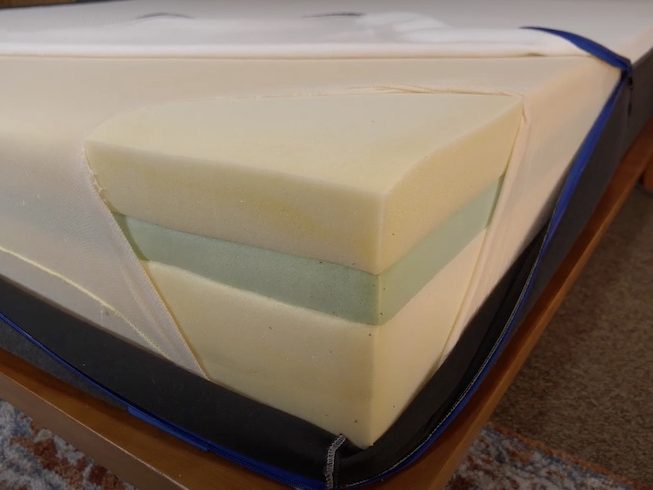
Finally, a 7-inch base layer of thick foam serves as the mattress’s foundation.
My Take: The Nectar has a relatively simple (and therefore affordable) design that has rightfully withstood the test of time. Side sleepers and back sleepers, you’re the ideal owners for this all-foam bed, and I think you’ll enjoy the mix of cushion and support it offers.
What I Liked
- Pressure relief you can feel – Memory foam beds offer a soothing sinking feeling that most hybrids can’t provide. The Nectar’s first foam layer molds around your body’s pressure points to create a slightly swaddled sensation, but it doesn’t surround you so much that you get stuck.
- Hard to beat the price – You get an indisputably good deal when you buy a Nectar mattress. These beds run slightly cheaper than hybrids, and they come with awesome policies, too: a lifetime warranty and a year-long sleep trial.
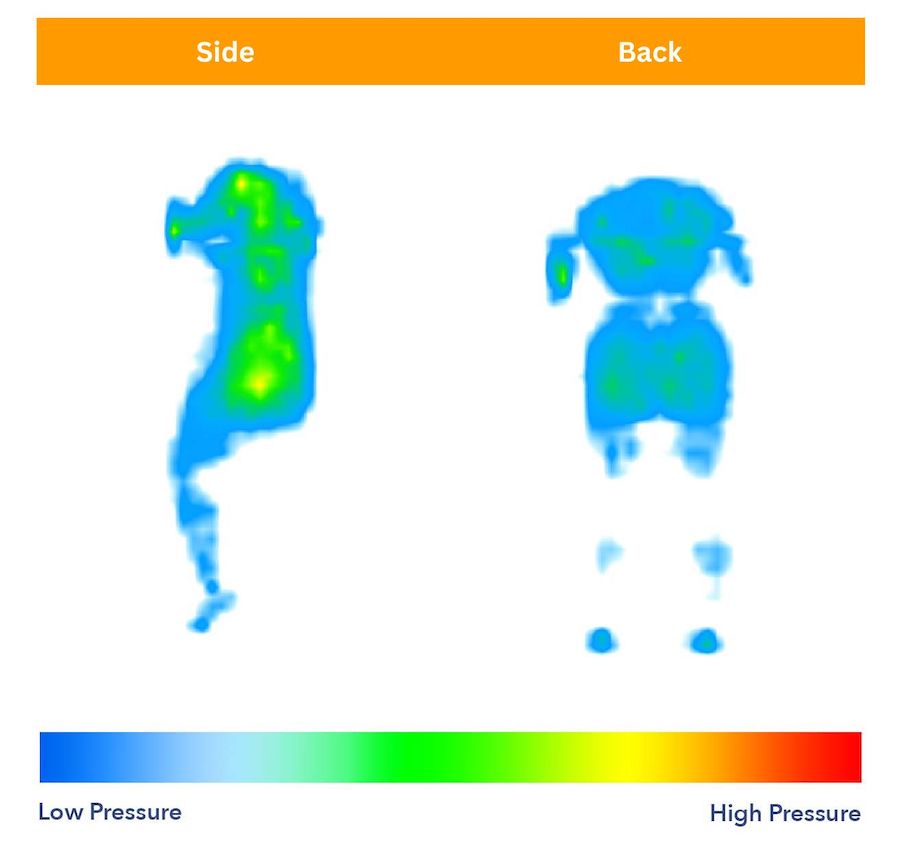
Potential Drawbacks
- Not built for stomach sleepers or heavy folks – As a stomach sleeper, I’m bummed that I’m not the ideal Nectar customer. If you sleep on your belly or you’re plus-size, you’ll need more foundational support than the Nectar can give.
- Cooling falls short – Hot sleepers should always be wary of all-foam beds and their tendency to retain warmth. Although the Nectar has some cooling elements, they aren’t enough to fully counteract this shortcoming.
Customer Reviews of the Nectar
With thousands of reviews on Nectar’s website, the Nectar mattress has an average 4.8 out of 5 stars. One common customer complaint about the Nectar mattress is its longer-than-average break-in period, while many customers praise its excellent value and comfort once fully settled.
Want to learn more? Here’s our full Nectar mattress review or check out our list of the best memory foam mattresses for more options.
EcoCloud by WinkBeds – Best Latex Mattress for Back Pain
WinkBeds EcoCloud Mattress

The EcoCloud by Winkbed provides a premium experience With some of the most natural materials in the bedding industry!
Material
Latex
Trial Period
120 nights
Shipping Method
Free shipping
Firmness
Medium: 5.5/10
Warranty
Lifetime warranty
Price Range
$$$$$
WinkBeds EcoCloud Mattress

The EcoCloud by Winkbed provides a premium experience With some of the most natural materials in the bedding industry!
Material
Latex
Warranty
Lifetime warranty
Firmness
Medium: 5.5/10
Shipping Method
Free shipping
Trial Period
120 nights
Price Range
$$$$$

WinkBeds EcoCloud Mattress
The EcoCloud by Winkbed provides a premium experience With some of the most natural materials in the bedding industry!
Material
Latex
Firmness
Medium: 5.5/10
Trial Period
120 nights
Warranty
Lifetime warranty
Shipping Method
Free shipping
Price Range
$$$$$
What’s the EcoCloud Mattress Made Of?
The EcoCloud is approximately 12.5 inches thick and made up of four layers: a cover, two latex comfort layers, and its innerspring unit.
The cover is made of organic cotton with a New Zealand wool batting. Both materials help to stave off high heat, as they’re naturally breathable and moisture-wicking. Per our tester Stuart, “You might think that something that’s organic might be a little more on the rough side, but it’s really smooth and really soft.”
Underneath are two 2-inch layers of Talalay latex. They’re perforated to permit cooling airflow and textured to provide differing levels of pushback throughout the body—a big advantage when you’re dealing with back pain or improper alignment. The latex should bolster your lumbar spine with added firmness while staying more plush around “sharper” regions, such as the shoulders.

At the base of the mattress is its 5-zoned spring system made from recycled steel. Like the latex layers, these springs have been designed to buoy the lumbar region and compress more easily under sensitive spots. They’re also reinforced along the edges, so you can roll all the way to the side without feeling like you might fall off.
Our Take: “Most sleepers will be able to find something they love with this bed.” – Stuart, Sleep Advisor Mattress Tester
What We Liked
- It’s got wide appeal – Stuart characterized this mattress as great for “people who need one versatile feel.” Its latex comfort layers balance pressure relief with responsiveness well enough that both back, side, and combination sleepers should have a lovely time on this bed. Lightweight stomach sleepers may find it cozy, too.
- High responsiveness – “Right off the bat, you can see this pretty springy surface,” said Stuart, referencing the bounciness of the EcoCloud’s latex layers. This responsiveness makes for easy repositioning and gives the bed a lot of bounce.
- Earth-friendly materials – As its name implies, the EcoCloud features materials that were sourced with the planet’s health in mind. Its latex is sustainably harvested, its cotton is certified organic, and the steel in its springs is recycled.
Potential Drawbacks
- Some motion transfer – “Overall, it did pretty good on the motion transfer test, especially after seeing how responsive it was,” said Stuart. But he did note that a glass cup wiggled a bit on the bed’s surface when he moved around on the opposite side.
- No hugging foams – “You should feel a comfortable cradling when you’re in this bed, but nothing too deep—we’re not quite at a hug-level yet,” said tester Stuart. If you enjoy sinking into your bed, you may not be a fan of the EcoCloud’s latex comfort layers.
Customer Reviews of the WinkBed EcoCloud
At 4.8 out of 5 stars on WinkBed’s site, the EcoCloud has an overwhelmingly positive response. Customers appreciate the eco-friendly materials used in the WinkBed EcoCloud mattress but have noted that the price point may be higher than some competitors.
Need more information? Check out our EcoCloud mattress review or check out our best latex mattresses for more options.
Saatva RX – Best Mattress for Lower Back Pain
Saatva Rx Mattress

The Saatva Rx mattress offers exceptional support for those with back and joint pain.
Material
Hybrid
Trial Period
365 nights
Shipping Method
Free white glove delivery
Firmness
Medium-firm: 6/10
Warranty
Lifetime warranty
Price Range
$$$$$
We recommend this mattress for the following sleeper types:
Hip Pain
This bed is perfect for anyone suffering from hip pain.Back Pain
This bed is perfect for anyone suffering from back pain.Back Sleeping
Ideal for lightweight and average weight back sleepers.Side Sleeping
Ideal for lightweight and average weight side sleepers.Stomach Sleeping
Ideal for lightweight and average weight stomach sleepers.Financing Options
Financing options are available for this mattress.
Saatva Rx Mattress

The Saatva Rx mattress offers exceptional support for those with back and joint pain.
Material
Hybrid
Warranty
Lifetime warranty
Firmness
Medium-firm: 6/10
Shipping Method
Free white glove delivery
Trial Period
365 nights
Price Range
$$$$$
We recommend this mattress for the following sleeper types:
Hip Pain
This bed is perfect for anyone suffering from hip pain.Back Pain
This bed is perfect for anyone suffering from back pain.Back Sleeping
Ideal for lightweight and average weight back sleepers.Side Sleeping
Ideal for lightweight and average weight side sleepers.Stomach Sleeping
Ideal for lightweight and average weight stomach sleepers.Financing Options
Financing options are available for this mattress.

Saatva Rx Mattress
The Saatva Rx mattress offers exceptional support for those with back and joint pain.
Material
Hybrid
Firmness
Medium-firm: 6/10
Trial Period
365 nights
Warranty
Lifetime warranty
Shipping Method
Free white glove delivery
Price Range
$$$$$
We recommend this mattress for the following sleeper types:
Hip Pain
This bed is perfect for anyone suffering from hip pain.Back Pain
This bed is perfect for anyone suffering from back pain.Back Sleeping
Ideal for lightweight and average weight back sleepers.Side Sleeping
Ideal for lightweight and average weight side sleepers.Stomach Sleeping
Ideal for lightweight and average weight stomach sleepers.Financing Options
Financing options are available for this mattress.
What’s the Saatva RX Made Of?
The Saatva RX is an impressive 15 inches tall. It’s topped with a breathable, antimicrobial cover for comfortably safe sleep; this cover is also quilted in the center to give you extra lift in your back. At the top of the mattress is a lumbar crown, a crest of foam designed to enhance lower back support even more, while also relieving pressure buildup.
Next, two dense foam layers encase a micro-coil layer. This combination works to adapt, cradle, and contour to your body.
The bed’s therapeutic support core consists of pocketed coils topped with 2-inch foam modules to reduce motion transfer. Coils around the perimeter are reinforced for stronger edges. Everything sits on top of an eco-friendly stable base layer.
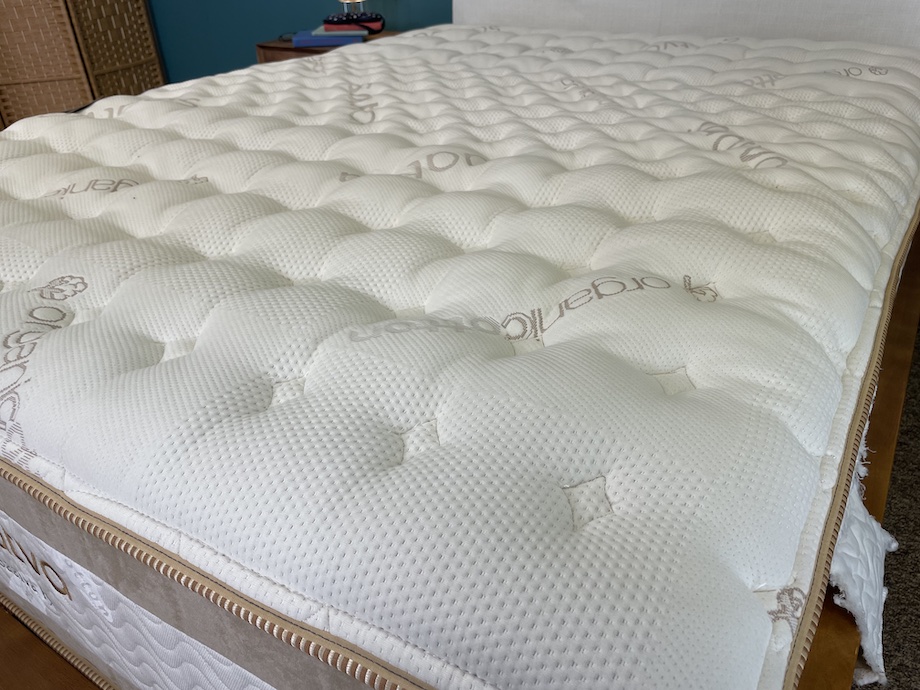
Our Take: “The pressure relief, spine alignment, and responsiveness are outstanding with the Rx. Saatva went above and beyond to make sure it would accommodate folks with back and joint pain.” – Loren, Sleep Advisor Mattress Tester
What We Liked
- Plenty of bounce – Both the mini coil unit and the regular coil unit contribute to the Saatva RX’s springy surface. If you toss and turn while sleeping, you won’t feel “stuck” in this bed.
- Should last long – We believe the Saatva RX’s height, specialized layers, and overall quality should contribute to the bed’s durability.

Potential Drawbacks
- Higher price point – The Saatva RX’s luxury status and high-quality construction will drive up its price. Before sales and coupons, a queen will cost you nearly $3,300.
- Not the best motion isolation – With a lot of bounce, the Saatva RX doesn’t lend itself well to dampening movement across the mattress surface. Light sleepers who share the bed may want to consider an all-foam mattress.
Customer Reviews of the Saatva RX
The Saatva RX rates 4.8 stars out of 5 on Saatva’s website. Some customers complained that the Saatva RX mattress had weak edges or felt too firm, while a notable advantage is its high-quality materials, providing durability and support.
Looking for more info? Check out our detailed Saatva RX mattress review.
Other Mattresses for Back Pain We Tested
While these mattresses didn’t make our list, each of these bonus beds are great fits for sleepers with back pain looking for that extra relief. Check out our featured recommendations below.
Product
Firmness
Trial Period
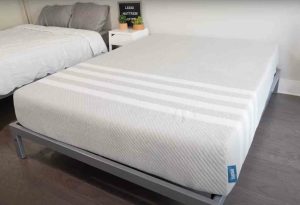
Product
Leesa Original MattressFirmness
Medium: 5.5/10Trial Period
100 nights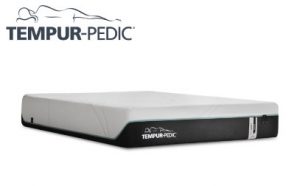
Product
TEMPUR-ProAdapt MattressFirmness
Multiple firmness optionsTrial Period
90 nights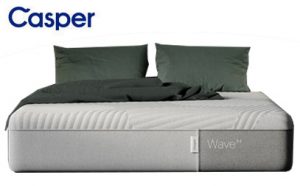
Product
Casper Wave Hybrid SnowFirmness
Medium-firm: 6/10Trial Period
100 nights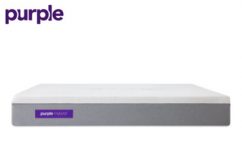
Product
Purple Hybrid MattressFirmness
Firm: 7/10Trial Period
100 nightsSleep Advisor’s Testing Methodology
Other Considerations When Shopping for a Mattress for Back Pain
Sleeping Position
The position in which you spend the majority of your sleeping hours can have a big impact on the type of mattress that will work best for alleviating and preventing your back pain.
For side sleepers, they’ll want something that keeps their hips and shoulders aligned but that also cradles these areas enough to relieve pressure. Back sleepers will likely want to look for a mattress that is a little firmer so that it can provide spinal support but also have some cushioning for the joints.
Stomach sleepers are going to need a firm mattress that offers plenty of support to keep their hips elevated so that their lower back doesn’t curve. This is because if the lower back curves too much, it can exacerbate pain in this area.
Weight/Body Type of Sleepers
Your body weight can not only affect your back pain, but it can also impact how soft or firm a mattress feels.
Heavyweight sleepers may find a bed much softer than their lighter counterparts. This could mean that sleepers who weigh more and have back pain may want to consider a firmer, more supportive mattress that will ensure a healthy spine alignment to manage back pain.
Conversely, lightweight sleepers can often benefit from softer mattresses so that they can still experience contouring and cradling. For the most part, average-weight sleepers with back pain should find beds in the middle of the firmness scale will best help their back pain.
Cooling
Although a mattress’s cooling capabilities may not directly affect your back pain, they could keep you more comfortable overall.
Innerspring and hybrid mattresses dissipate heat well due to the open structure of the coils that promote airflow.
Another good choice is to get a bed made from latex, which is naturally a cooler material.
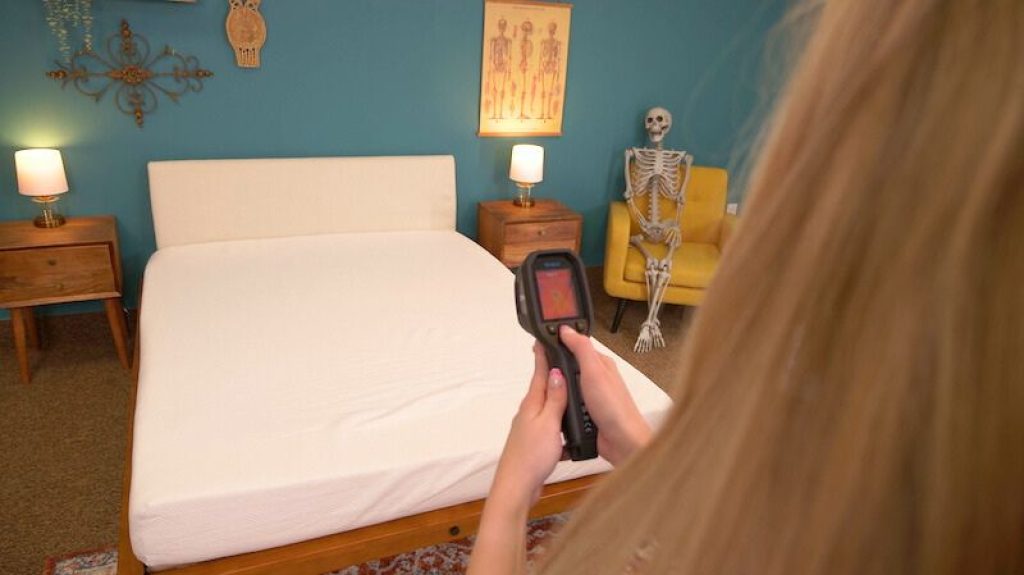
Although memory foam has long had a reputation for sleeping hot, this is an issue that is being addressed more and more, and now, you can find plenty of hybrid and all-foam mattresses with memory foam that are laden with cooling technology.
Motion Isolation
If you sleep with a partner or pet, a bed with good motion isolation can be highly beneficial, and this may be particularly true if you have back pain. A mattress that isolates motion well means that it absorbs the motion made by the movements of one person and keeps it from transferring to the other side of the bed. Slow-moving memory foam mattresses typically offer fantastic motion isolation.
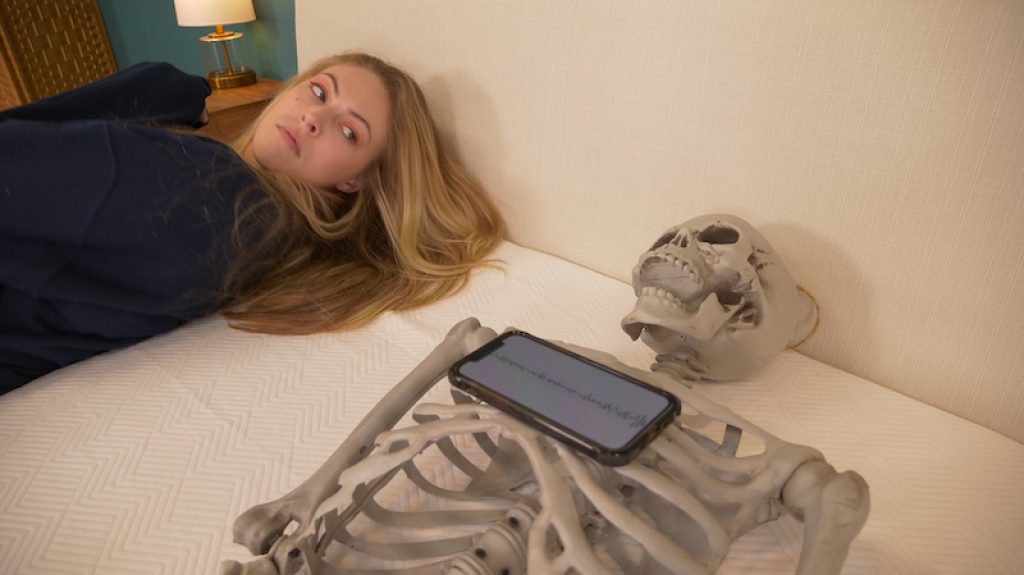
Sex
People with back pain may also be sexually active, and therefore, may want a bed that can be accommodating for both. Those looking for a good bed for sex will likely want one that is bouncy and responsive. In this case, innerspring, hybrid, and latex mattresses are going to offer you more buoyancy than standard memory foam models.
Pressure Relief
It’s essential that you aren’t sleeping on a bed that places too much pressure on your spine. This is also true for any major joints. That’s what’s going to allow your body to rest in a relaxed state. The chance of pressure points forming along the spine is diminished dramatically when the appropriate product is picked.
For pressure relief, look at beds containing memory foam and latex, and avoid traditional innerspring models with a thin comfort layer.
Learn more: Best Mattress for Pressure Relief
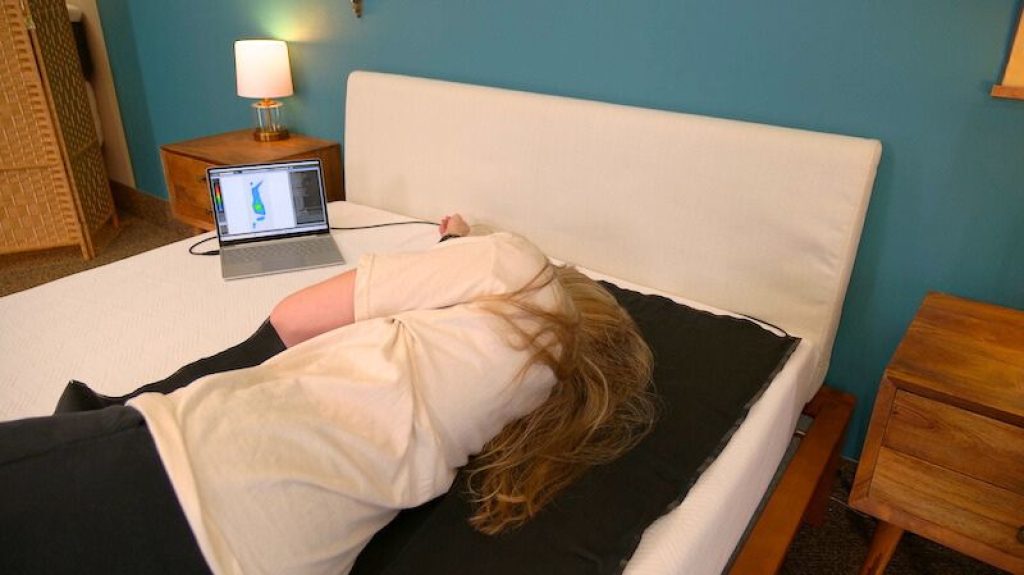
Edge Support
Edge support is how well a bed can support people when they are sleeping or sitting along the perimeter of the bed. This feature could be especially appealing to those with back pain as it can help with getting in and out of bed and prevent sleepers from feeling that they are falling out of bed when they’re close to the side. Mattresses that implement stronger coils or foams around the edge are usually the ones with better edge support.
Budget
Budget is often a big factor when shopping for a new mattress. You may think that you’ll have to spare no expense to get a mattress that is good for back pain, but fortunately, this isn’t the case.
Quality mattresses that can help prevent back pain can be found in almost every price range. Therefore, it is advisable that you identify the type of mattress that most suits your needs and then research the ones that are in your budget.
What Causes Back Pain?
Back pain is not uncommon — about 25 percent of U.S. adults5 report having lower back pain in the last three months — but what’s behind it?
There’s no one answer that explains every case, and you should always have your symptoms assessed by a doctor if you want an individual diagnosis. Speaking more generally, however, back pain is often attributable to one of the following causes.

Pulled Back Muscle and Lower Back Strain
Lower back or lumbar pain could result from a range of different causes. However, these causes are associated with the lumbar disc directly or with muscle strains. This could result from sudden movements, lifting heavy objects, or any other twists.
In this case, you would need to get a professional consultation with your doctor, especially if you have certain medical needs. Your doctor could also provide you with more specific details on what type of bed space you should rest on as you try to recover.
Stress
Believe it or not, stress is a cause of back pain. According to health experts, stress can change the way you breathe, creating tension in the back6. Additionally, if you’re stressed with work, you may find yourself sitting more than usual, which can also lead to tension in the lower back area.
Along with getting a more comfortable mattress, you can find ways to help manage your stress. Massages, meditation, warm baths, eating healthy, and exercise are some popular ways to deal with stress and anxiety.
Sleep Disorders
Sleep disorders usually entail breathing-related problems, such as snoring or sleep apnea. When your back is supported firmly and properly, the air can easily and freely flow to your lungs. This is going to help minimize the effects of sleep conditions of any kind, and it is also going to reduce snoring.
Keep in mind that sleeping disorders also translate to a lack of sleep. Not getting enough rest can worsen stress, and as mentioned, stress can lead to back tension, creating a problematic cycle.
Can a Mattress Cause Back Pain?
Your mattress can cause back pain as well. Problems often arise when a bed doesn’t promote proper spinal alignment, which refers to the spine’s natural, “neutral” curvature.
A mattress that’s too soft or too firm to allow for this alignment can give rise to pain or exacerbate symptoms that were already present. So, while those with chronic back pain might think they have a rocky relationship with sleep, the real issue might be their habits or their mattress.
Pressure relief is also important for pain reduction and sleep quality — if your mattress doesn’t take the strain off your most sensitive body parts, they’ll start or continue to ache.
However, it’s important to find a material that relieves pressure while still allowing movement. Too much sinkage into a mattress can be detrimental to both your comfort and your bodily alignment.
What Is the Best Sleeping Position for Back Pain?
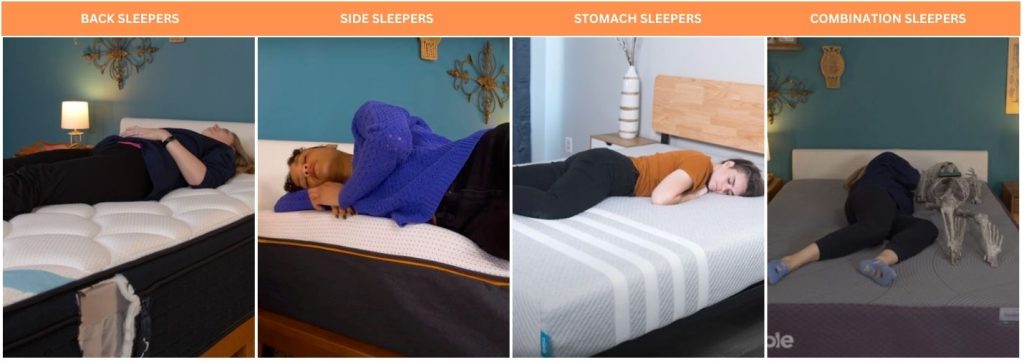
Back Sleeping
Back sleeping is considered the best sleeping posture for back pain7.
When sleeping on your back, there should be a slight, natural curve to your spine and enhanced support for your mid and lower back. (Mattresses that offer zoned support tend to be great at promoting this “neutral” posture.) Your neck should be able to rest backward on a slightly elevated pillow.
Side Sleeping
Side sleeping is considered a good runner-up position for those with back pain.7 When you’re lying on your side, your spine should be in a fairly straight line as your hips and shoulders sink slightly into the bed.
Combination Sleeping
Combination sleepers will want to ensure that their spine is supported in all of their preferred sleep positions. This is often accomplished by a bed with a universally-appealing firmness like medium-firm. Although softer or harder beds may better suit one particular sleep position, those who utilize multiple positions can find a better compromise with a bed that’s more in the middle of the scale.
Stomach Sleeping
Unfortunately for stomach sleepers, this posture is considered the worst sleeping position for back pain.7 However, for some, it’s still what feels most comfortable. In that case, it’s important to maintain optimal alignment.
Stomach sleepers should ensure that their bed keeps their midsection from sinking too much into the mattress, as this can create pressure on the lower back in particular.
Tips for Better Sleeping with Back Pain
- Pillows – Pillows can be highly useful for taking pressure off your spine8. Side sleepers can place a pillow between their legs to alleviate pressure. Back sleepers can use a pillow under their knee to help, while stomach sleepers can place a pillow under their hips.
No matter your sleep posture, you’ll also need to ensure the pillow your head rests on supports the spine’s natural curve. For example, stomach sleepers sleeping on a pillow that’s too tall may wake up with upper back and shoulder pain.
- Mattress Toppers – A mattress topper can help change the way your mattress feels. This is an excellent option for people who don’t like how their current mattress performs.
If you find yourself sleeping on a mattress that lacks enough support or pressure relief for your symptoms, a mattress topper designed for back pain could be an economical solution.
- Foundations and Bases – Having a proper foundation and base under your mattress makes all the difference in how the bed performs. For this reason, most modern manufacturers recommend a robust platform bed or foundation for their mattresses.
- Adjustable Beds – Adjustable bed frames are excellent for people with back pain, as they allow you to independently modify the elevation of your upper and lower body parts. You can find positions that relieve specific pressure points, such as the popular “zero gravity” pose that slightly raises both your head and your feet. The majority of beds work with nearly all foundations, but adjustable bases can be an exception. If you have your eye on an adjustable base, make sure the mattress you want is compatible with one.
The Best Mattresses for Different Types of Pain
- Best Mattress for Scoliosis
- Best Mattress for Sciatica
- Best Mattress for a Herniated Disc
- Best Mattress for Spinal Stenosis
- Best Mattress for Hip Pain
- Best Mattress for Shoulder Pain
Compare Prices of Our Favorite Mattresses for Back Pain
| Mattress | Best For | Price (Queen Size) | Review |
| Helix Midnight Luxe | Editor’s Pick | $2,373 | Helix Midnight Luxe Review |
| Emma Hybrid Comfort | Firm | $1,199 | Emma Hybrid Comfort Mattress Review |
| Nectar | Memory Foam | $1,042 | Nectar Mattress Review |
| EcoCloud by WinkBeds | Latex | $1,999 | WinkBeds EcoCloud Mattress Review |
| Saatva RX | Lower Back Pain | $3,295 | Saatva RX Mattress Review |
Mattresses for Back Pain FAQs
Can a pillow help alleviate back pain?
While a better mattress can help with back pain and proper spinal alignment, it isn’t the only factor. When paired with the proper pillow, the duo could help reduce back pain and contribute to a healthier sleep experience by properly elevating the neck and shoulders for better support.
Read More: Our Best Pillows Guide
Are firm or softer beds better for back pain?
Generally, medium-firm mattresses offer the most help for those with lower back pain. Look for a mattress that offers sufficient support to keep your body aligned but also contours a bit to relieve pressure in sensitive areas.
What mattress firmness do I need for back pain?
The best mattress firmness for you depends on your preferred sleep position and body weight. If you’re a stomach sleeper, you should steer towards a firmer mattress than people who prefer sleeping on their side. Generally speaking, most people benefit from a medium firmness with zoned support in the lower back area and other sensitive points.
What’s the best sleeping position for lower back pain?
The best sleep position for lower back pain is back sleeping2. However, if you’re not used to sleeping this way, it may take some practice. One way to help yourself is to add a pillow under your knees to make it more comfortable if you’re usually not a back sleeper.
Learn about our picks for the best mattresses for back sleepers
What’s the best sleeping position for upper back pain?
Upper back pain isn’t as common as lower back pain, but the best way to alleviate it is by sleeping on your back on a supportive and pressure-relieving mattress, particularly for the shoulders. We also mentioned earlier that stress can create tension in the middle and upper back, so you’ll want to manage your stress to help relieve upper back pain.

Julia Forbes
Lead Product Tester
About Author
Julia is the Lead Reviewer at Sleep Advisor, specializing in testing out mattresses and sleep accessories – she’s in the right line of work, because she loves to sleep.
Stomach Sleeper
References:
- Hira, Kazuhiro., et al. “Relationship of sagittal spinal alignment with low back pain and physical performance in the general population”. National Library of Medicine. 2021.
- Caggiari, Gianfilippo., et al. “What type of mattress should be chosen to avoid back pain and improve sleep quality? Review of the literature”. National Library of Medicine. 2021.
- “Slide show: Sleeping positions that reduce back pain”. Mayo Clinic. Last modified May 5, 2023.
- Low, Fan-Zhe., et al. “Effects of Mattress Material on Body Pressure Profiles in Different Sleeping Postures”. National Library of Medicine. 2017.
- “Back Pain”. National Institute of Arthritis and Musculoskeletal and Skin Diseases. Last modified March 3, 2023.
- “Acute Low Back Pain”. Centers for Disease Control and Prevention. Last modified January 31, 2023.
- Choi, Sungwoo., et al. “Association between chronic low back pain and degree of stress: a nationwide cross-sectional study”. Scientific Reports. 2021.
- Cary, Dough., Briffa, Kathy., McKenna, Leanda. “Identifying relationships between sleep posture and non-specific spinal symptoms in adults: A scoping review”. National Library of Medicine. 2019.

